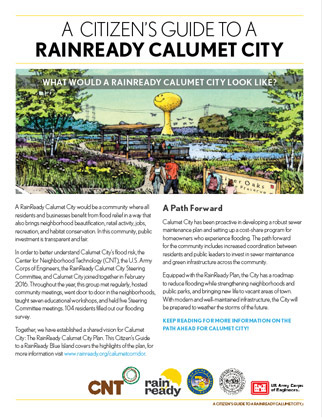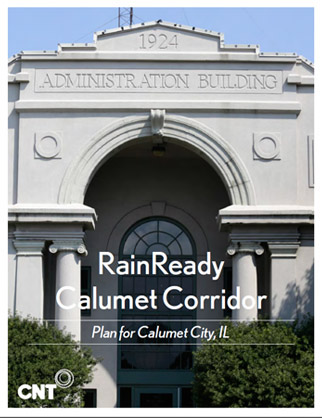RainReady Calumet City
The RainReady Calumet City Steering Committee will work with residents, staff, and elected representatives to make Calumet City resilient through green and gray infrastructure improvements in alleys, vacant lots, and expansive parking lots.
Resilience Opportunities
Calumet City has been proactive in developing a robust sewer maintenance plan and setting up a cost-share program for homeowners who experience flooding. The path forward for the community includes widespread green infrastructure installation to reduce flood risk while creating more beautiful neighborhoods, and increasing coordination between residents and public leaders.


In the 123 years since incorporation, Calumet City has been home to meatpackers, beer brewers, printmakers, and famed bootlegger, Al Capone. These days, River Oaks Center draws shoppers from across the South Suburbs, the new Public Library and Police Department set a standard for public excellence, and Calumet City public schools empower young people to be leaders in the community. The City still conducts business from its original, brick-laid City Hall building.
Like many of its neighbors, Calumet City has been plagued by chronic floods for years. From 2007 to 2011, 4,620 flood-related insurance claims were filed, with more than $12,603,844 dollars paid out in damages. Residents suffer a mix of basement backup, street and yard flooding, overbanking from the Little Calumet River, and foundation seepage.
Calumet City Steering Committee
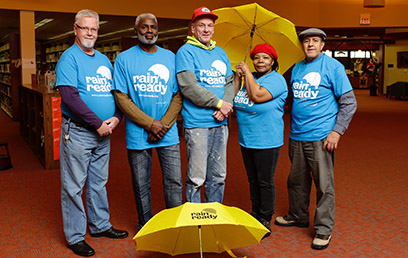
Community leaders joined together in 2016 to form the RainReady Calumet City Steering Committee. The Committee is particularly focused on retrofitting vacant lots, alleys, and vast concrete districts with green infrastructure. They also seek to expand social and youth activities.
The most visionary idea from the Calumet City Steering Committee? They want to rehabilitate a portion of River Oaks Mall into a wetland park with bird habitat and walking trails. Read on for more details.
What We’ve Found
Residents report flooding across town, and say they are ready to take action to address it!
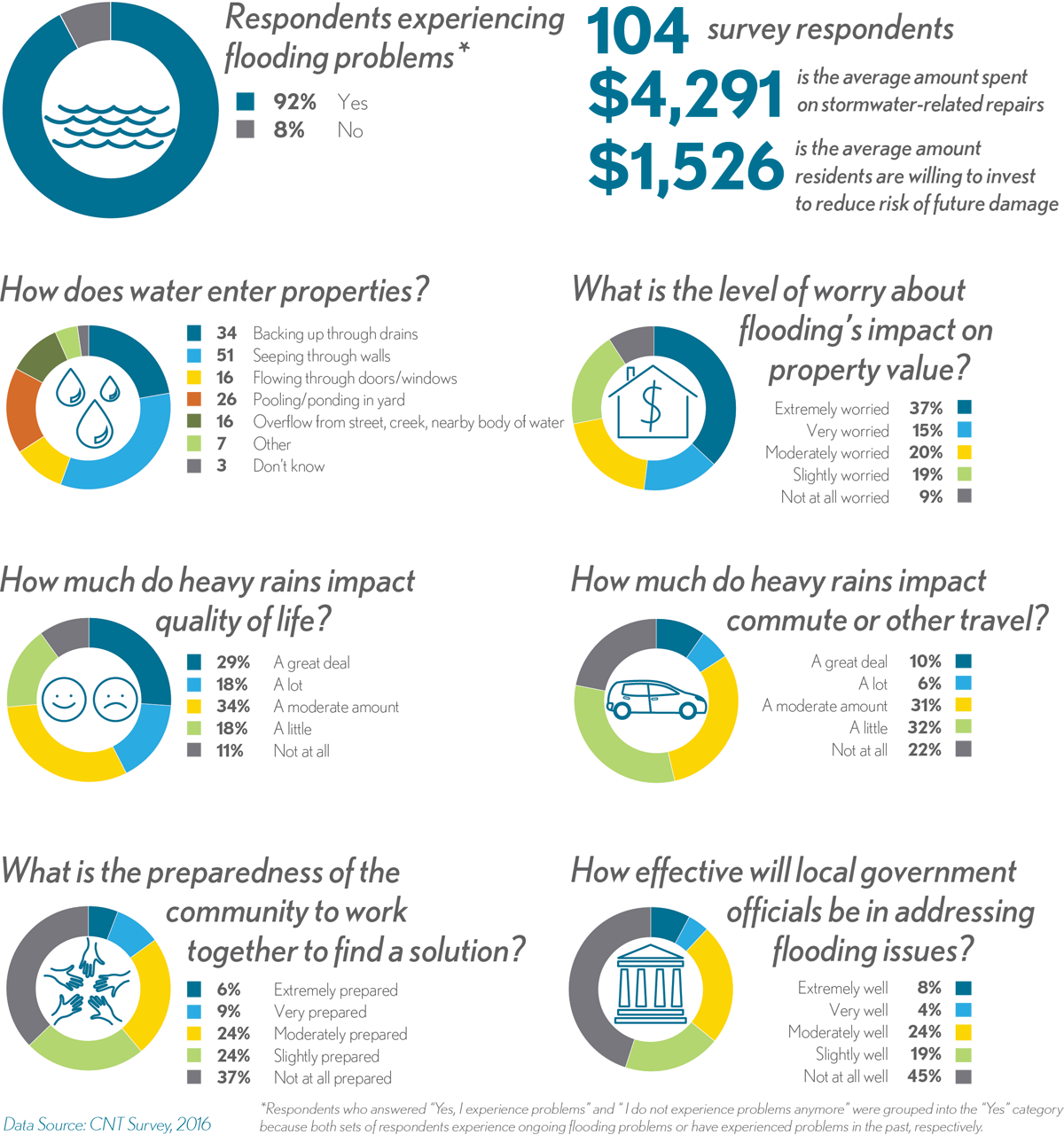
RainReady Solutions
What would a RainReady Calumet City look like? It would be a community where local residents and businesses receive relief from flooding in a way that also creates more beautiful neighborhoods, new jobs, recreation, retail activity, and habitat conservation. Read on for a few highlights of the RainReady Calumet City Plan.
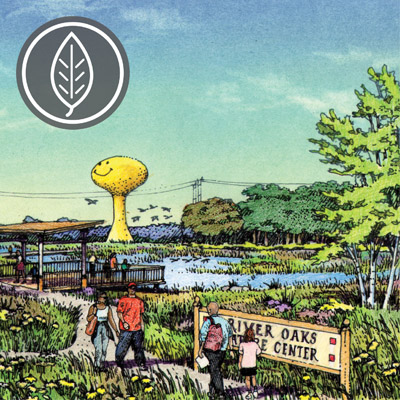
RETROFITTING PARKING LOTS
Calumet City has many large parking lots. When a big storm hits the city, rainwater runs off these parking lots in sheets, often overwhelming the local sewer and sending pollutants into local waterways. While access to safe and convenient parking is necessary to support Calumet City businesses, many of these lots sit vacant most of the time. Fortunately, it is possible to retrofit parking lots in a way that creates a safer and more inviting area for walkers while increasing economic activity and mitigatig local flooding issues.
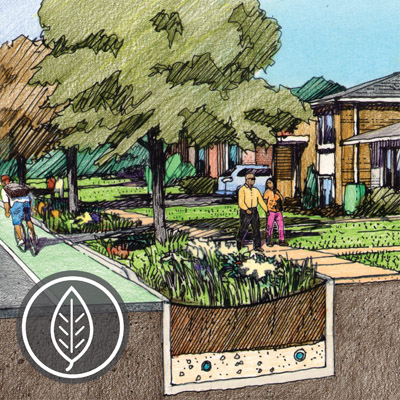
NEIGHBORHOOD GREENING
Create a network of beautiful residential streets built to capture stormwater, increase property values, and make streets safer for walking, biking, and playing. This program would help community members soak up rain by installing green infrastructure in their yard, parkways, parks, and vacant properties in the neighborhood. RainReady recommends concentrating efforts in the neighborhoods south of Pulaski Road between Burnham Avenue and State Line Road where there is a large concentration of vacant parcels.
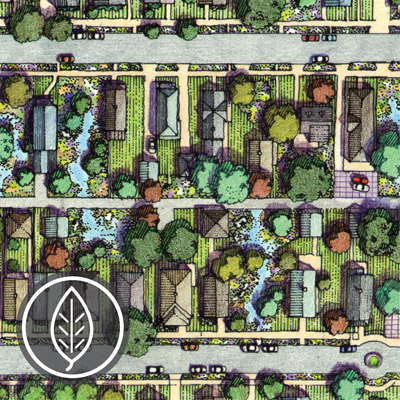
INVEST IN THE NEW TOWN CENTER
Calumet City is already working to bring fresh energy to its New Town Center. RainReady recommends that these improvements incorporate strategies to reduce flooding while creating beautiful public spaces. This could include community gardens, improvements to Memorial Park, bike lanes adjacent to bioswales, and rain gardens at existing and proposed government buildings.


